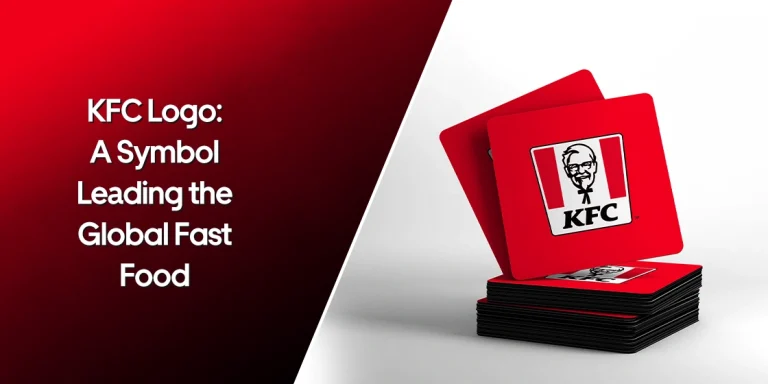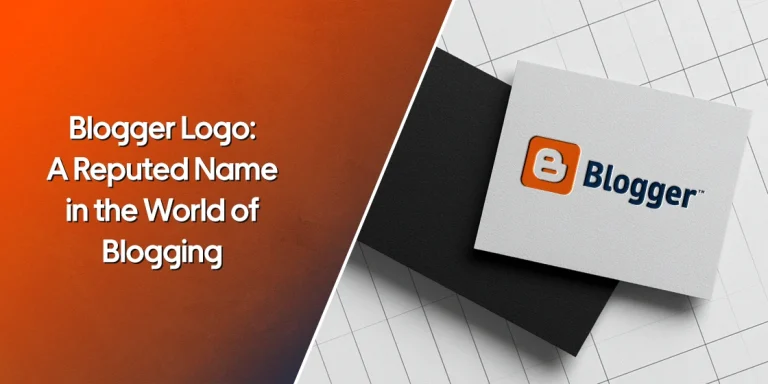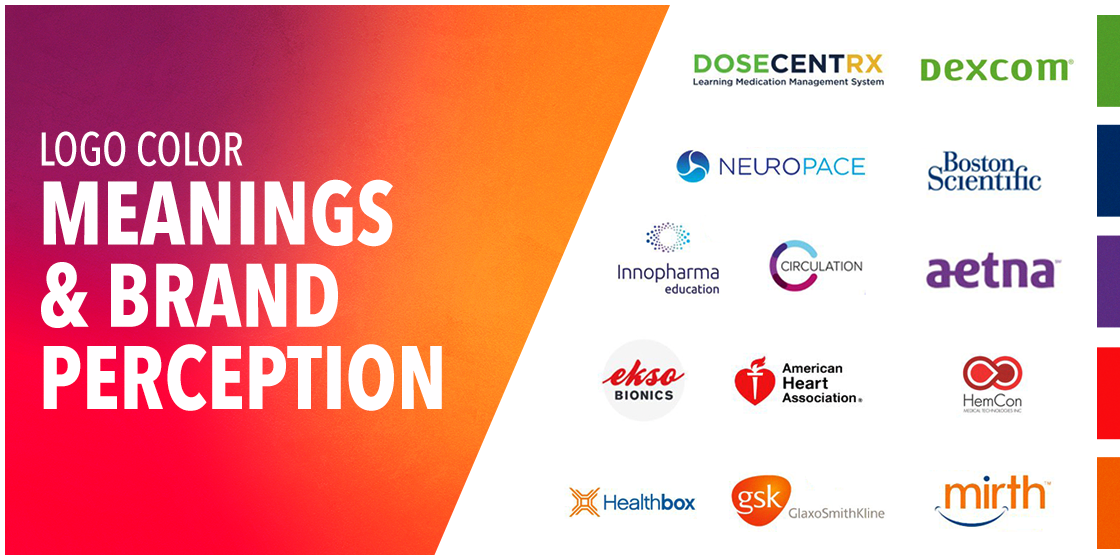
Table of Content
Discover How Each Logo Color Meaning Affect Consumer-Brand Interactions
Any designer worth their salt would know that colors have the ability to affect the way any piece of art is perceived. And with your brand symbol being the most visible part of your brand art, logo color meanings can influence the way consumers perceive it, and your business.
Finding the right logo colors can be hard, especially if you are not familiar with the concept of logo color psychology, and are in the dark about what different shades and logo color combinations mean. To help you find the right colors for your brand, we have compiled a list of nine different color groups, and how their meanings can affect the way your brand is seen by its consumers.
So, without further ado, let’s take a look at how a professional logo design company uses color theory to find the right shades to enhance your brand’s look.
Color Psychology – Overview on How Logo Color Meanings Impact Consumers
Color theory tells us that different colors, even different shades of the same color, can have wildly different effects on the people who see it. That is because us humans have learned some perceptions and associations regarding these colors over our lives. And our minds automatically build a connection with the color that we see now with the same color experienced before.
For example, the color gold is often associated with richness, or opulence. That is because for us, gold is a precious metal, and we perceive everything colored gold, as something to revere. Similarly, browns are often considered boring, or bland. Due to a lifetime of learning that brows as a color doesn’t pop, we believe that it is a color not worth using.
In that same way, logo color groups like reds, greens, blues, and more are used to portray the right vibe along with your brand message. Brand specialists often get together with designers to discuss the different logo color meanings before finding the perfect color scheme for their own logo.
However, while certain color meanings may have an affinity to your brand message and aesthetic, it doesn’t mean that all shades within that color family would go well with your brand. Once you’ve find the right color family to suit your brand, the next step is to figure out the best shades of that color family for your brand and logo.
Building Your Color Palette – Finding Shades with the Right Color Meanings for Logos
There are a few major color groups, which contains a number of different shades related to that color. For example, both Coca-Cola and McDonalds use red in their logo color palette. Yet the shade of red they use is different for both of them.
Similarly, you have the choice to use the shade that best suits your brand’s aesthetic, in order to portray what your business is all about. A designer, depending on the color model they use, can choose from a variety of colors, from primary, secondary, and even tertiary colors. Let’s take a look at some of the more popular color groups, and find out the logo color meanings they embody.
Red Color’s Meaning in Logo Design
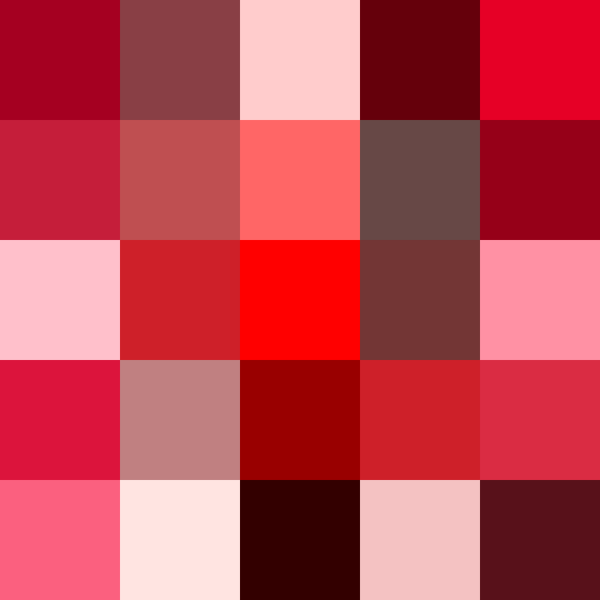
Red is often considered the color of passion, of love, of energy. It is a color group that is equally loved by the men and the women, although it may be for different aspects of this color group. the shades of red are often intense, deep, and powerful in their effect. That is often why you see the color used so commonly among the different types of logos of brands from a variety of business niches.
Reds also have a physiological effect on its viewers. It raises our pulse rates, boosts blood pressure, and sharpens our appetite. And it is a color that is guaranteed to grab your attention. Have you ever wondered why so many popular fast food places use red within their branding palette? Or why fire truck red from colors starting with F is such a visually striking color that instantly catches our attention, triggering the fight or flight mode in us?
That is because the color red demands action. From call-to-actions like “Click Here” or “Buy Now”, to restaurant menus and color themes, the color red is used to add a sense of dynamic energy and passion into a brand.
Yellow and Its Importance in Logo Color Psychology
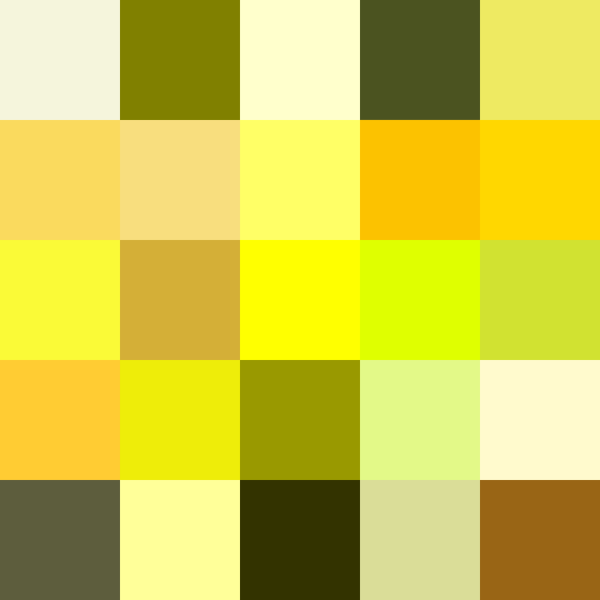
Yellow is one of the brightest and most vibrant colors that brands have available. It is most often associated with warmth, light, sunshine. Yellow is the color of happiness and joy, such as the shade canary yellow from colors that start with C. When people see the color yellow, they associate it with feelings of joy. And this feeling not only stimulates our physical and cognitive faculties.
It is another great group of color if you want to grab the attention of consumers. However, designers need to use caution when implementing it within their designs. While the logo color meanings of different shades of yellow are mostly about the energy and warmth, too much of that tends to make its viewers impatient and agitated.
So the best way to balance out the yellow within your logo colors by mixing it with another shade that counteracts its negative aspects, without taking away from or affecting the impact of your logo.
Shades of Blue and Their Logo Color Meanings

Blue is the color of tranquility and calm, belonging to colors that start with B. It is the sea, the river, and the sky. Different shades of blue are used to reflect the calm, and are a great addition to your design if you want to portray a calming and soothing vibe.
Blue is also often associated with confidence and intelligence. That is why you will often see technology companies and those in the IT sector using various shades of blue in their logos. However, we need to be careful about how we use the various shades of blue to leverage their logo color meanings to our advantage.
As you will see in many corporate logos that use shades of blue, blue can also be used as a bright and dynamic actor, especially when using brighter shades of the color. but too much of it, and especially the darker shades, have a tendency to drag out feelings of melancholy and depression, as evident by the phrase “Being Blue”.
Green and The Use of Its Shades in Logo Design
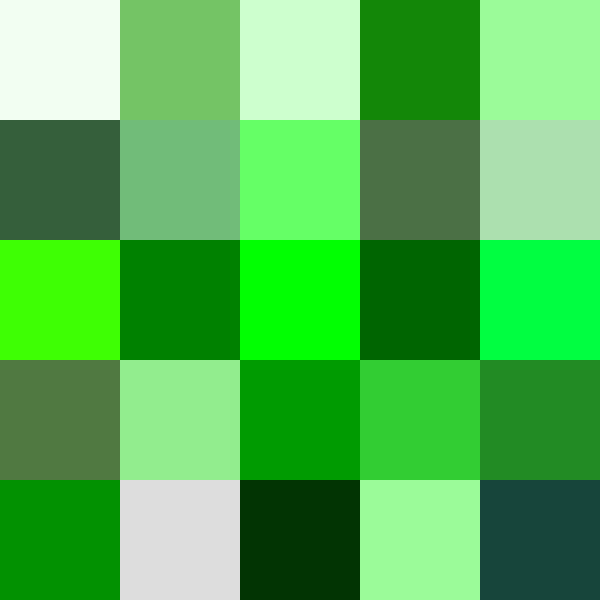
Ah, green. The color of life, of spring, rebirth, and new beginnings, such as alpine green from colors starting with A. It is also associated with fertility, safety, plentiful resources, and the open environment. On the flip side, it also represents sentiments like greed, envy, wealth, and even a lack of experience.
However, while the latter sentiments may have the feel of negativity, the way you use different shades of green within your design will influence its vibe. By leveraging its positive feelings, green can be soothing and healing for those that view it. And not just mentally. Green has also been proven to have great physical health benefits for people.
Moreover, as we humans are used to the overabundance of the color in our surroundings, it makes for a great backdrop for your design.
Purple and Violet, and the Perception Behind Their Use

Purples are created by mixing the elements and properties of two colors we have discussed earlier – blue and red. This union allows purple to embody both the fierce energy of the reds and calm serenity of the blues. However, if you look at shades of purple like eggplant purple from colors starting with E, you will see that it has a vastly different visual impact to its parent colors. This is also a phenomenon seen in some combinatory shades from other color groups.
Purple is also often used to portray opulence, richness, regality, and an elevated self. It is used to represent those in power, the nobility, and luxury of the ambitious. Logo designs that use purple portray themselves as elegance personified.
The various shades of purple can have a somewhat different effect on people, from lighter shades that represent spirituality, to the deeper shades that represent sophistication and a regal demeanor to those who look at it.
White Color’s Meaning in Logo Design

White is the color that is often associated with purity, innocence, and cleanliness. From shades like light cream to egg shell, there are a number of shades that make up the color family of white. White is often used for a cleaner contrast to many dark and passionate colors. Yet that doesn’t mean that white isn’t as powerful as those darker, more volatile shades.
White is often the color that cuts through the gloom and darkness, giving your logo a refreshing breath of light and life. it is cool, calm, and simple. That is what makes the different shades of white so effective at providing a balance in design, as they allow you to reach mental clarity.
And with simplicity and minimalism in vogue right now, you could do well by incorporating different shades of white into your design, and benefit from the logo color meanings they embody.
Orange Color’s Meaning in Logo Design

Just like purple is a mix of red and blue, orange is born of the union between yellow and red. An iconic family of shades, made famous by the citrus fruit named for it, it automatically brings to mind a fruity mix of tangy and sweet.
Unlike purple, which is more of a cold color, orange is warmer. It is considered a color of change, of joy and creativity, and is the color most often associated with the season of autumn or Fall. This makes it perfect for representing brands that are looking to embody a sense of life and energy, and the circle of life.
It has also been proven that besides its factors like compassion and warmth, orange is also a great color that gives your appetite a boost. You will see the reflection in many restaurant logos and their decor.
Shades of Brown and Their Logo Color Meanings
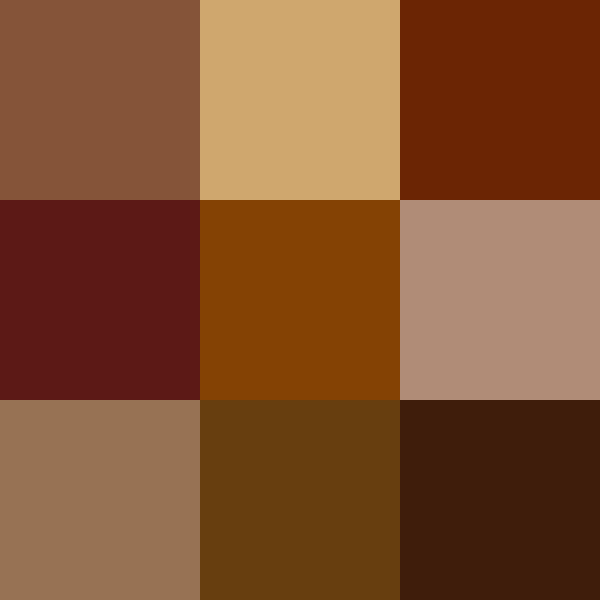
Browns are colors that are used to portray something stable, hardworking, and reliable. The warm earth tones provide the perfect grounding to brighter, more expressive colors, which can be used to balance out the design.
Moreover, the comfortable earthy tones are all about being comfortable, such as the shade dusty rose, which is one of the lesser known shades of pink color that has distinctive brown overtones. There is no sense of showing off when you use brown, rather it is about accepting who you are and taking it from there. And when you combine these shades with a nature-first design motif, they provide a depth of expression unmatched by other colors.
Black and Its Color Meanings
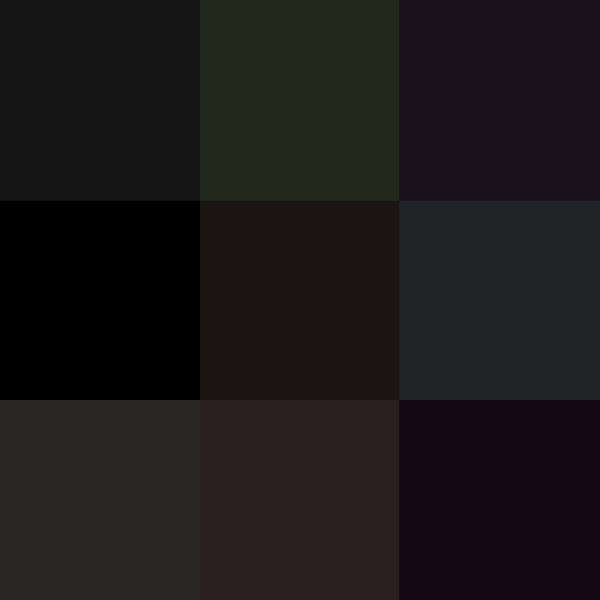
Finally, we get to the color black. This group of colors is often an enigma for the design philosophers. Is black an absence of light, or is it a lack of color? Whatever the answer may be, the fact is that black today is the color most commonly associated with sophistication and austerity.
However, this is one color that changes its logo color meanings based on the culture of those who use it. in some cultures, it is considered an ill omen, and is often associated with death. While in others it may go even further and be considered outright evil.
But in most of the western world today, black is the color for corporate brands. It shows that you are serious about your business, and that is what attracts your target consumers to you. So, if you want to give your logo a sense of strength, professionalism, and elegance, then why not add a little black to it?
How are Logo Color Meanings Established, and Are They Universal?
Now that you know what different colors offer in terms of value to your logo, you might be wondering how these logo color meanings came to be. For the most part, these associations are a mix of cultural, physiological, and learned behaviors, which is why two people from different areas and background might react differently to a specific color.
Let’s look at some of the common ways that people associate different shades with their respective color meanings.
Learned Associations through Cultural Expression
Learned associations are those that we see around us practiced every day. And soon, we too start to associate that meaning with that specific shade of color. For example, dressing in black for a funeral is something we all learn over our lives. We see it practiced at different moments in our lives, and soon, our minds start to connect the two as correlated. That is what learned associations are all about.
Trained Color Associations through Repeated Interactions
Trained, or preprogrammed associations are some logo color meanings that experts suggest are a result of our physiology and evolutionary make up. For example, shades of red are some of the most prevalent around us, especially on items that want to attract the gaze. From the under-plumage of the African gray parrot to a prancing baboon’s backside, red is a color we animals associate with passion and desire.
Visual Aesthetics of Different Shades
Color aesthetics are all about what colors we feel work well together or in a given scenario. You’ll often find yourself in a situation where you might feel that a specific shade of blue feels lackluster, while in another given situation that color would be perfectly fine. Our minds are designed to pick up good contrasts, and if the colors blend or clash violently, then it causes a dissonance in our minds.
Choosing Your Brand Colors Based on Color Meanings for Logos
Choosing a single color for your logo might seem difficult, but finding a secondary shade to compliment your primary is even harder. There are a number of ways you can study and use color psychology to find the right shades to accompany your primary color.
However, a word to the wise, avoid using too many colors in your design. Generally, logo designers tend to use a maximum of three shades in their designs. That is because too many colors can end up muddling the intended impact of the relevant color meanings, thus making your logo less effective.
Do You Need a Monochrome Logo Variant?
One more important point to note, is that a logo is that one piece of branding that needs to be displayed on a variety of mediums, from small merchandise and stationary, to large billboards. Not all mediums are made for a full-color printing, however.
That is why you need to ensure that your design works well in a monochrome setting too, without losing its impact. That will allow your logo to be truly versatile, making it a valuable branding asset. Now, when we talk about monochrome here, we usually mean black on white, or vice versa. This allows you to have a version of your logo that works equally well on black/white mediums as it does in full color.
What Emotions and Perception Do Your Logo Color Meanings Portray? A Review
Now that we have taken a look at the various groups of colors commonly used in our design palettes, and discovered how each of these color families impact their viewers, what next?
Well, now you need to create your brand color palette so that you can use those shades for your brand symbol – aka your logo. But how can you ensure that you have the right colors in your palette? Well, that’s what we will take a look at in this section.
Taking our extensive experience into consideration, we have created a list of common emotional perceptions that brand logos usually portray, and the colors that can be used for that. So, let’s take a look at how you can get the right colors to showcase your brand message effectively.
- If confidence is what you want to portray in your logo, then Orange is the color you are after
- Red is the perfect color set to use if you want to get your consumers’ hearts racing, and fill them with energy
- Want to highlight a creative and imaginative vibe? Then the regal purple is perfect for the job
- Blue is the perfect color for getting people to trust your brand, focusing on a sense of dependability
- Want to highlight growth and sustainability? Green up your brand color palette
- Looking to keep it simple and classic? Nothing beats the black and white combo
Depending on your brand messaging, you can choose from one or more of these shades to showcase your vibe. You can use these shades alone, or combine them into a multi-color palette to take advantage of their different perspectives.
With each of these color families having a number of shades to choose from, you will be able to find ones that complement each other easily.
Frequently Asked Questions
| 1- What do logo colors represent? Colors help your brand connect with the target consumers, by appealing to them on a psychological level. They represent the brand’s aesthetics and vision, and can help get you the right customers. |
| 2- What is the best color for a logo? Blue and red are statistically, two of the most popular colors used in logo design. However, the best color depends entirely on your brand, and the design of the symbol that represents it. And only by studying those, will you be able to make the right choice. |
| 3- What colors stand out in a logo? According to the theory of color psychology, there are a few colors that have a powerful impact in a logo. They are: – Red for powerful emotions – Blue for calm and logic – Green for health and life – Yellow for warmth and joy – Orange for a little fun – Purple for elegance and royalty – Brown for safety and security – Black for austerity – White for purity and clarity |
| 4- What do colors mean in branding? Colors are a design element that can help your branding strategy boost its impact by appealing to the innate sensibilities of the target market. Through learned and instinctual associations, the right colors can make even a simple logo look attractive, and effective. |
Conclusion
Leveraging the right logo color meanings can make your logo design quite impactful. However, if you choose shades with color meanings that do not compliment your brand aesthetics, then no matter how great your logo looks, it will fail to have the intended impact.
Now, if you want to hire a professional logo design services provider to help you create a logo that suits your brand, Logo Poppin is here to help you. Our designers have helped many businesses establish an effective brand identity, expanding their reach and boosting revenue.

Logopoppin
Logopoppin is a graphic design agency that specializes in logo designing, web development, video production and advanced branding services. We love to innovate businesses with new age technologies, allowing them to improve their visual reputation.

